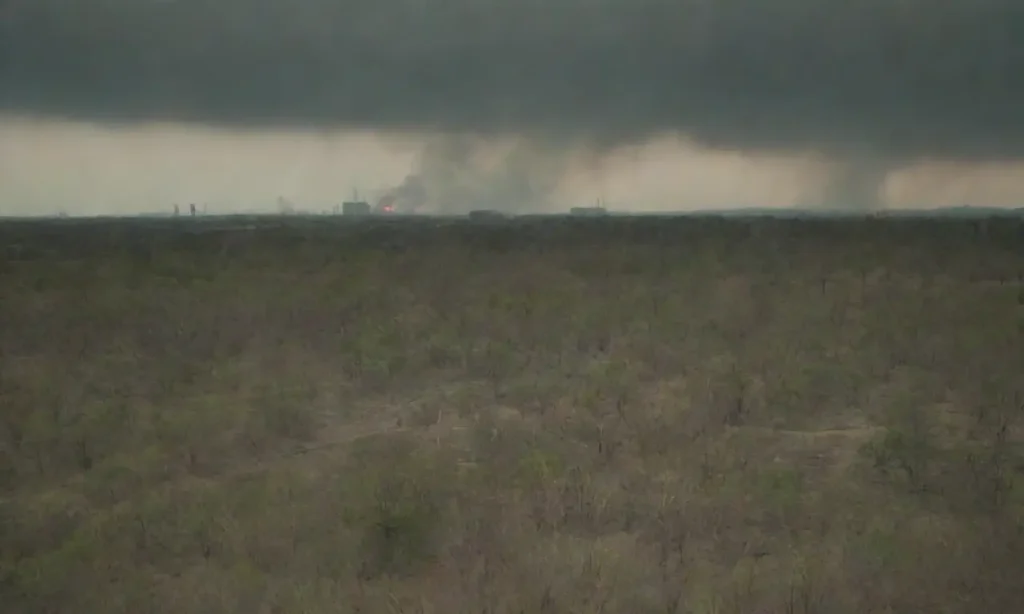
Applications of Neural Networks in Environmental Monitoring Systems

Introduction
Environmental monitoring systems are essential for assessing and managing the quality of our ecosystems. These systems gather vast amounts of data from various sources, including air quality sensors, weather stations, and satellite imagery. The significance of this monitoring has grown tremendously over the years as the world faces issues like climate change, pollution, and biodiversity loss. With the increasing complexity of environmental data, traditional analytical methods often fall short in providing accurate insights or timely responses.
To address these challenges, many researchers and environmental scientists have turned to sophisticated computational tools, particularly neural networks. Neural networks, a subset of artificial intelligence and machine learning, mimic the functioning of the human brain to uncover patterns in large datasets. This article will explore the numerous applications of neural networks in environmental monitoring systems, showcasing how these innovative technologies offer groundbreaking solutions to pressing ecological challenges.
Understanding Neural Networks
Neural networks consist of interconnected nodes or "neurons," organized into layers. The input layer receives raw data, which is then processed through one or more hidden layers before producing an output in the output layer. The architecture of a neural network allows it to learn from data and improve its predictions over time. This learning ability is what makes neural networks particularly effective for tasks that involve large, complex datasets, such as those commonly found in environmental monitoring.
The training process of neural networks involves backpropagation, where the model adjusts its weights and biases based on the error in its predictions. This iterative learning process enables the network to minimize prediction errors, improving its overall accuracy with each cycle. As a result, well-trained neural networks can recognize patterns that are not readily observable to human analysts. To bolster this training, neural networks may be fed a diverse range of environmental data, such as temperature readings, humidity levels, air pollution indices, and geographical information.
Advancements in Semi-Supervised Learning for Remote Sensing DataOne of the key advantages of using neural networks in environmental monitoring is their adaptability. Unlike static models that rely on predefined parameters, neural networks can adjust to new data inputs, making them suitable for dynamic, evolving systems. This versatility allows them to respond more effectively to changes in environmental conditions, a crucial feature in areas prone to fluctuations caused by weather events or human activities.
Air Quality Monitoring
One of the most prominent applications of neural networks is in air quality monitoring. Given that air pollution poses significant health risks and environmental damage, real-time monitoring of air quality parameters is vital. Neural networks can analyze data from sensor networks that measure pollutants such as carbon monoxide (CO), nitrogen dioxide (NO2), and particulate matter (PM).
By employing neural networks, researchers have successfully developed predictive models that can forecast air quality levels weeks in advance. These models utilize historical air quality data, meteorological factors such as wind speed and direction, and regional traffic patterns to anticipate pollution spikes. This predictive capability empowers local governments and environmental agencies to implement timely interventions to mitigate pollution-related hazards.
Moreover, neural networks contribute to the identification of pollution sources. By correlating spatial data with pollutant concentrations, these networks can help pinpoint industrial emissions, traffic-related pollution, and other contributing factors. Understanding the sources of air pollution is essential for developing effective regulations and encouraging sustainable practices in urban planning and transportation.
Leveraging Image Segmentation for Remote Sensing with ML ToolsCase Studies in Air Quality Monitoring
A notable case study illustrating the effectiveness of neural networks in air quality monitoring is in urban settings, where traffic congestion contributes significantly to air pollution. Researchers in a metropolitan city utilized a recurrent neural network (RNN) equipped with long short-term memory (LSTM) architecture to analyze incoming air quality sensor data. The study revealed that the model could accurately predict pollution spikes during rush hour but also identified that weekends exhibited different pollution patterns unrelated to traffic.
Another successful application was found in a coastal region where neurocomputing techniques were employed to better understand the impacts of meteorological variables on air quality. By integrating data from monitoring stations and meteorological datasets, the model revealed the influence of sea breeze effects on pollutant dispersion. This knowledge proved vital for health advisories issued during certain weather conditions, thus facilitating informed decision-making to protect public health.
Water Quality Monitoring

Water quality is paramount for ecosystems, human health, and agriculture, making its monitoring a priority for communities worldwide. Neural networks can analyze data from water quality sensors that measure critical parameters such as pH levels, turbidity, dissolved oxygen, and the presence of harmful contaminants. By employing neural networks in water quality monitoring systems, researchers can automate the process of water analysis, significantly improving efficiency and reliability.
Leveraging Remote Sensing Data for Smart Cities with ML TechniquesNeural networks facilitate the development of models that can classify water quality in real time based on sensor data. Through supervised learning, these models are trained on historical data labeled with water quality classifications (e.g., safe, unsafe, or variably safe). Once fully trained, the models can categorize new water samples quickly and accurately, providing essential insights to water management authorities.
Additionally, neural networks help to predict water quality trends based on various influencing factors such as rainfall, temperature, and land use changes. For instance, the input from local weather forecasts can be fed into the neural network to estimate future water quality, helping authorities prepare for events like algal blooms or contamination from agricultural runoff.
Real-World Applications in Water Quality Monitoring
One notable application of neural networks in water quality monitoring is observed in the Great Lakes region, where researchers deployed a convolutional neural network (CNN) to analyze satellite imagery of water bodies. By assessing algal bloom occurrences through high-resolution imagery, the model provided timely alerts regarding toxic algal blooms, facilitating informed decision-making among local health authorities about recreational water use and potential threats to drinking water supplies.
Another significant effort was made in urban areas with complex drainage systems susceptible to pollution from stormwater runoff. Here, neural networks were applied to analyze the interplay between rainfall data and water quality sensor readings, allowing city planners to formulate effective stormwater management strategies. The models effectively identified critical areas where infrastructure improvements were needed to reduce pollution during heavy rainfall events.
Detecting Anomalies in Remote Sensing Data with ML TechniquesBiodiversity Monitoring
Biodiversity is an integral component of healthy ecosystems, and monitoring species populations is key to ensuring conservation efforts are effective. Neural networks play a crucial role in biodiversity monitoring by analyzing large sets of ecological data, including species distribution models, habitat quality assessments, and remote sensing data.
One of the primary applications is the identification and classification of species from image datasets. High-resolution camera traps and drones capture images of wildlife, which can then be processed using convolutional neural networks (CNNs) to recognize species from visual data. Such techniques can greatly enhance the efficiency of wildlife surveys, allowing researchers to identify the presence of endangered species or monitor populations over time.
Neural networks can also assist in modeling species-habitat relationships. By integrating data on environmental variables—such as temperature, precipitation, and land cover—neural networks can predict suitable habitats for various species. This predictive capability is particularly useful in supporting conservation strategies, allowing managers to focus their efforts on critical habitats and prioritize areas for protection.
Case Studies in Biodiversity Monitoring
In a recent project aimed at conserving endangered bird populations, researchers utilized neural networks to analyze audio recordings collected from different habitats. These recordings contained various sounds made by birds, and the neural network was trained to recognize specific species through sound patterns. As a result, it was possible to track bird populations across vast areas without the need for intrusive field surveys.
Trends in Remote Sensing Data Classification via Machine LearningAnother successful application occurred in tropical rainforest regions, where satellite imagery is abundant. By employing deep learning techniques, researchers developed models that could accurately classify land cover types and identify regions of deforestation or habitat loss. This information is vital for biodiversity conservation and enables stakeholders to take action against illegal logging and habitat destruction.
Conclusion
The integration of neural networks into environmental monitoring systems holds immense potential for advancing our understanding and management of environmental variables. From air and water quality monitoring to biodiversity assessments, neural networks provide invaluable tools for analyzing complex datasets that traditional methods may overlook. The adaptability, efficiency, and predictive capabilities of these networks empower researchers and policymakers to make informed decisions in real time, ultimately benefiting our ecosystems and human communities.
As environmental challenges grow increasingly complex and interlinked, the role of neural networks in monitoring and addressing these challenges will only become more significant. Their ability to learn from diverse data sources and adapt to changing conditions allows for a nuanced understanding of environmental dynamics. Collaborative efforts between data scientists, ecologists, and policymakers, coupled with advances in neural network technologies, will pave the way for innovative solutions aimed at fostering a sustainable future.
In summary, neural networks are revolutionizing the field of environmental monitoring. Their applications continue to expand, providing new insights and driving advancements in conservation, sustainability, and ecological health. As we navigate the challenges of our time, embracing these cutting-edge technologies may very well be the key to enhancing our environmental management strategies and ensuring the health of our planet for generations to come.
Web-Based Platforms for Machine Learning in Remote SensingIf you want to read more articles similar to Applications of Neural Networks in Environmental Monitoring Systems, you can visit the Remote Sensing Analysis category.



You Must Read